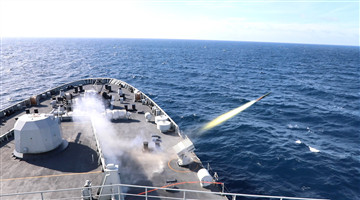
Natural dangers
He quickly understood. In September 2006, Typhoon Xangsane plowed across Southeast Asia, causing large waves that washed over the beach time and again.
"All the trees we had planted on the beach were swallowed by the seawater. All gone. All our efforts were in vain," Qiu said.
Looking at the island now, his words are hard to comprehend: The road from the dock to the garrison is lined with coconut trees, pine woods surround the perimeter wall and the white, sandy beach is covered with sea purslane that stretches in all directions. The camp even has a vegetable plot where green peppers, pak choi, chives and water spinach are grown.
Coconut trees are among the most successful plants on the island. The first to produce new buds was planted in 1982 and still bears fruit today. However, not all the saplings have been so lucky.
Located in a tropical cyclone zone, the Xisha Islands are hit by more than 20 typhoons a year, with at least two or three passing straight across Zhongjian, according to radar technician Zhang Xiaowei, who arrived in 2006.
Every time a typhoon was forecast, the sailors set up steel pipes around the trees and tied them together to fortify the trunks. Then they climbed to the tops of the trees and cut off many of the branches so the canopy would withstand the force of the wind. However, the aftermath was still heartbreaking every time as large numbers of trees were uprooted and broken branches were scattered across the ground.
To revive the dying trees, the sailors immediately trimmed the broken branches and replaced soil at the roots that had been hollowed out by the gale and seawater. Though the trees continued to grow, the section of trunk split by the typhoon would be narrower than the other parts.











